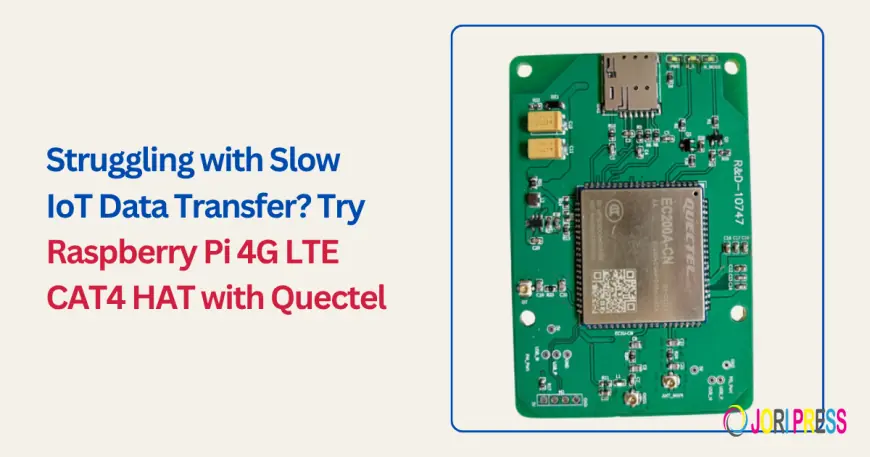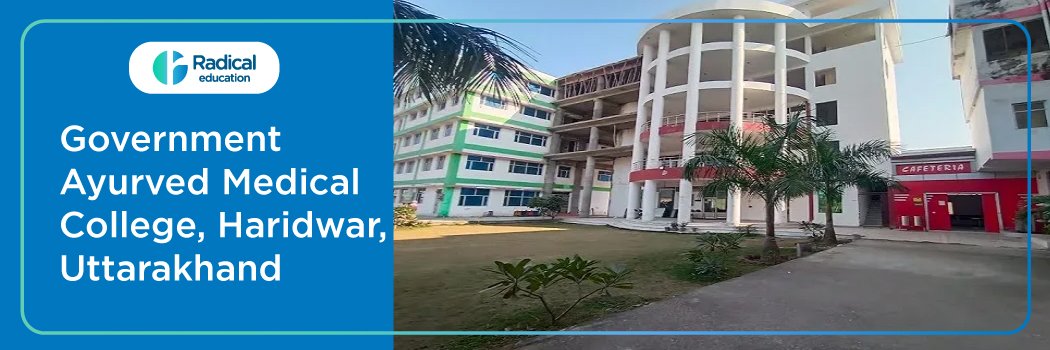Struggling with Slow IoT Data Transfer? Try Raspberry Pi 4G LTE CAT4 HAT with Quectel
Speed up IoT data transfer with the Raspberry Pi 4G LTE CAT4 HAT powered by Quectel for fast, stable, and reliable connectivity in your IoT projects.

In the evolving Internet of Things (IoT) ecosystem, reliable and fast data transfer is the backbone of real-time performance. From smart agriculture to industrial automation and remote surveillance — every IoT solution relies on seamless data communication. Yet, developers often face one persistent bottleneck: slow or unstable connectivity.
If you’ve struggled with sluggish data speeds or frequent disconnections in your Raspberry Pi-based IoT projects, there’s a game-changing solution — Raspberry Pi 4G LTE CAT4 HAT with Quectel. This compact yet powerful module is designed to deliver high-speed cellular connectivity for IoT and M2M applications, ensuring consistent performance even in remote environments.
Understanding the Connectivity Challenge in IoT Projects
IoT systems continuously collect, process, and transmit data between sensors, gateways, and cloud platforms. However, Wi-Fi and Ethernet connections have their limitations:
-
Wi-Fi is often unreliable outdoors or across long distances.
-
Ethernet restricts mobility, making it unsuitable for portable or field-deployed devices.
-
3G and low-category LTE modules can’t keep up with modern data demands.
These constraints can lead to delayed updates, incomplete data transmission, and poor system responsiveness, especially in mission-critical environments such as logistics tracking or remote monitoring.
That’s where 4G LTE CAT4 technology, powered by Quectel’s advanced module, comes into play.
Introducing Raspberry Pi 4G LTE CAT4 HAT with Quectel
The Raspberry Pi 4G LTE CAT4 HAT is a plug-and-play hardware accessory designed to integrate high-speed cellular connectivity into your Raspberry Pi. Equipped with a Quectel EC25 module, this HAT empowers your Raspberry Pi to connect to global 4G LTE networks with robust speed and reliability.
Key Technical Highlights:
-
LTE CAT4 Speed: Up to 150 Mbps (download) and 50 Mbps (upload)
-
Supported Networks: 4G, 3G, and 2G fallback for global compatibility
-
Interface: USB 2.0 / UART / GPIO for flexible integration
-
SIM Slot: Standard micro-SIM support
-
GNSS Functionality: Built-in GPS/GLONASS for location-based services
-
Antenna Ports: Dedicated LTE and GNSS antennas for stable signal reception
With Quectel’s EC25 module at its core, the HAT ensures low latency, high throughput, and optimized network performance — perfect for real-time IoT communication.
Why Choose Quectel’s 4G LTE CAT4 Module?
Quectel is a global leader in cellular and GNSS modules, known for its industrial-grade reliability and performance. The Quectel EC25 series offers several advantages that make it a preferred choice for developers and enterprises:
-
Proven Stability: Engineered for long-term industrial applications.
-
Wide Carrier Compatibility: Works with major cellular networks worldwide.
-
Integrated GNSS: Ideal for asset tracking and fleet management.
-
Robust Design: Operates efficiently across a wide temperature range.
-
Low Power Consumption: Ensures energy efficiency in battery-powered systems.
This combination of speed, durability, and efficiency makes Quectel modules ideal for Raspberry Pi-based IoT solutions that demand uninterrupted connectivity.
How the Raspberry Pi 4G LTE CAT4 HAT Improves IoT Data Transfer
Integrating this HAT into your IoT setup solves multiple performance challenges. Here’s how:
1. High-Speed Data Transmission
With LTE CAT4 capability, your Raspberry Pi can transmit data at up to 150 Mbps, enabling smooth streaming, rapid uploads, and instant communication with cloud platforms like AWS IoT, Azure IoT Hub, or Google Cloud.
2. Low Latency for Real-Time Applications
Real-time IoT solutions — such as industrial automation or smart traffic management — rely on minimal delay between devices. The Quectel module ensures low-latency performance, ideal for instant data exchange.
3. Uninterrupted Connectivity in Remote Areas
Unlike Wi-Fi, which depends on local infrastructure, LTE provides wider coverage. This makes the HAT perfect for field-deployed IoT systems such as agriculture sensors, weather stations, or asset trackers.
4. Failover Connectivity for Critical Operations
When Wi-Fi fails or fluctuates, your Raspberry Pi can automatically switch to LTE, maintaining continuous operation — essential for security cameras or remote monitoring gateways.
5. Enhanced Mobility and Flexibility
The HAT transforms Raspberry Pi into a fully portable IoT hub, allowing developers to deploy devices anywhere with cellular coverage — no tethering to routers or cables.
Practical Use Cases
The Raspberry Pi 4G LTE CAT4 HAT with Quectel is not just a connectivity upgrade — it opens the door to innovation across industries:
1. Smart Agriculture
Monitor soil conditions, control irrigation systems, and collect environmental data from remote farms where Wi-Fi isn’t feasible.
2. Industrial Automation
Enable real-time machine monitoring, predictive maintenance, and data synchronization across distributed manufacturing units.
3. Transportation & Fleet Tracking
Use built-in GPS with LTE for asset tracking, live vehicle telemetry, and route optimization.
4. Remote Surveillance
Deploy cameras or sensors in isolated areas and stream HD video or data securely over LTE.
5. Environmental Monitoring
Collect real-time data from weather stations, air quality sensors, and water management systems located far from urban centers.
Getting Started with the Raspberry Pi 4G LTE CAT4 HAT
Setting up the HAT is straightforward and requires minimal configuration.
Step 1: Mount the HAT on your Raspberry Pi GPIO pins.
Step 2: Insert a micro-SIM card with an active 4G plan.
Step 3: Connect LTE and GNSS antennas.
Step 4: Power up the Raspberry Pi and install required drivers.
Step 5: Use network configuration tools (like ppp or ModemManager) to connect to your carrier.
Once configured, your Raspberry Pi will function as a high-speed IoT gateway with stable LTE access.
Benefits at a Glance
|
Feature |
Advantage |
|
High-Speed LTE CAT4 |
Up to 150 Mbps download |
|
Quectel EC25 Module |
Industrial-grade stability |
|
Global Compatibility |
Works across 4G/3G/2G networks |
|
Built-in GPS |
Enables location tracking |
|
Low Power Draw |
Perfect for battery-powered devices |
|
Plug-and-Play Setup |
Easy integration with Raspberry Pi |
Why This Combo Is a Game-Changer for IoT Developers
The combination of Raspberry Pi’s flexibility and Quectel’s cellular performance makes this HAT an essential tool for IoT innovators. Whether you’re building a smart city sensor node or a mobile robot, this setup guarantees reliable, fast, and secure communication across all environments.
Instead of relying on unstable Wi-Fi or outdated modules, developers can now build production-ready, always-connected systems using one compact, cost-effective solution.
Conclusion
If your IoT projects are struggling with inconsistent connectivity or slow data transfers, it’s time to upgrade to Raspberry Pi 4G LTE CAT4 HAT with Quectel. It combines the processing power of Raspberry Pi with the speed and stability of LTE, ensuring your devices stay connected — anywhere, anytime.
From remote monitoring and industrial control to smart mobility solutions, this HAT delivers the performance your IoT network deserves.
FAQs
Q1: Which Raspberry Pi models are compatible with the 4G LTE CAT4 HAT?
Most models, including Raspberry Pi 4, 3B+, and 5, are compatible with the HAT.
Q2: Does the HAT support global SIM cards?
Yes. The Quectel EC25 module supports multiple LTE bands for global use.
Q3: Can I use this HAT for GPS tracking applications?
Absolutely. It includes built-in GNSS for GPS, GLONASS, and other satellite systems.
Q4: What kind of antenna setup is required?
Two antennas — one for LTE and one for GNSS — are recommended for optimal performance.
Q5: Is the HAT suitable for industrial environments?
Yes. The Quectel module is designed for industrial-grade performance and reliability.
What's Your Reaction?
 Like
0
Like
0
 Dislike
0
Dislike
0
 Love
0
Love
0
 Funny
0
Funny
0
 Angry
0
Angry
0
 Sad
0
Sad
0
 Wow
0
Wow
0



















































